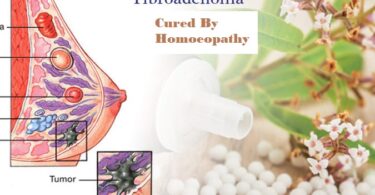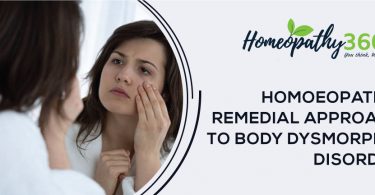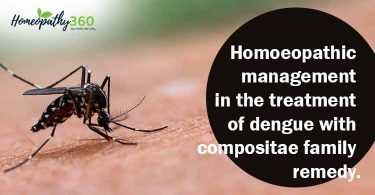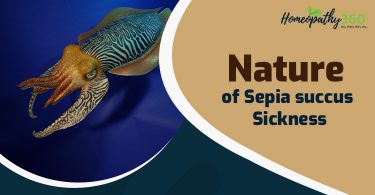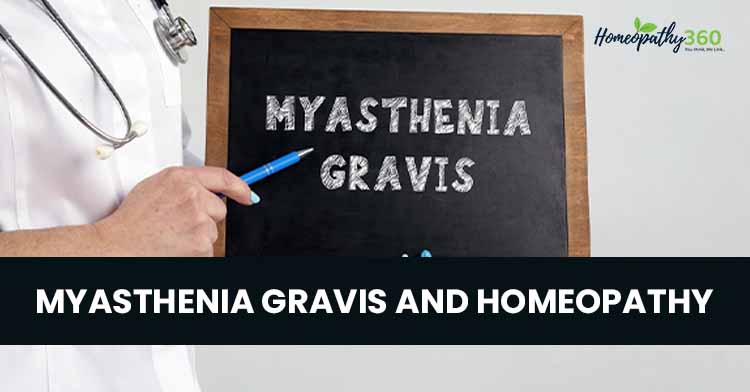
A CASE STUDY: MYASTHENIA GRAVIS AND HOMEOPATHY
ABSTRACT
Hereby, we present a case of a 64 years Male diagnosed with Myasthenia, a known case of Diabetes Mellitus treated with Homoeopathy in its acute state showing recovery without conventional mode of treatment.
Myasthenia cases require immediate action from the beginning to avoid bad prognosis & homeopathy has a good impact on neuromuscular disorders with good outcome in long-term treatment. However, it is equally important to bring back the deteriorated state of health with Rapid recovery. This case was chosen for the purpose of study as well as to demonstrate the efficacy of individualized Homeopathic treatment in case of Myasthenia Gravis.
Key words: Homoeopathy, Myasthenia Gravis, Curare, Causticum, Diabetes
INTRODUCTION
Myasthenia gravis is the most common cause of acutely evolving, fatigable weakness and preferentially affects ocular, facial and bulbar muscles.[1]
It is a long-term neuromuscular disease that leads to varying degrees of skeletal muscle weakness. It can result in double vision, drooping eyelids, trouble talking and walking. The onset can be sudden. [2]
This condition is characterized by progressive fatigable weakness, particularly of the ocular, neck, facial and bulbar muscles.[5]
AETIOLOGY & PATHOLOGY
Caused by autoantibodies to acetylcholine receptors in the post-junctional membrane of the neuromuscular junction, Myasthenia is characterized by the blockage of neuromuscular transmission by these antibodies which initiate a complement-mediated inflammatory response. This reduces the number of acetylcholine receptors and damages the end plate.
A minority of patients have other autoantibodies to epitopes on the post-junctional membrane, in particular autoantibodies to a muscle-specific kinase (MuSK), an agrin receptor which is involved in the regulation and maintenance of the acetylcholine receptors.
About 15% of patients (mainly those with late onset) present with a thymoma, and a huge chunk of the remainder show thymic follicular hyperplasia. An increase in the incidence of other autoimmune diseases is seen, and the disease is linked with certain HLA haplotypes. Factors which trigger the disease itself are still unknown to us, but penicillamine can cause an antibody mediated myasthenic syndrome which may persist even after drug withdrawal. Some drugs, especially aminoglycosides and ciprofloxacin, often exacerbate the neuromuscular blockade and should be avoided in patients with myasthenia[5]
CLINICAL FEATURES
The disease is most commonly seen between the ages of 15 and 50 years, with the sex ratio showing women affected more often than men in the younger age groups and the reverse at older ages. A relapsing and remitting course is seen especially during the early years.[5]
The cardinal symptom is abnormal fatigable weakness of the muscles (which is different from a sensation of muscle fatigue); the muscle movement is strong initially but rapidly declines. Worsening of symptoms is typically seen towards the end of the day or following exercise. There are no sensory signs or signs of involvement of the central nervous system, although weakness of the oculomotor muscles may mimic a central eye movement disorder.[5] The initial symptoms are usually intermittent ptosis or diplopia, but gradual development of weakness of chewing, swallowing, speaking or limb movement occurs. Any limb muscle may be affected, most commonly those of the shoulder girdle; the patient is unable to undertake tasks above shoulder level, such as combing the hair, without frequent rests. In some cases respiratory muscles may be involved, and in these cases respiratory failure becomes a common cause of death. Aspiration may also occur if the cough is ineffectual. Sudden weakness from a cholinergic or myasthenic crisis may require ventilatory support.[5]
CASE HISTORY
A 64 Years old, male Diabetic patient presented with Ptosis & difficulty in swallowing of food. His chronology of symptoms- drooping of lids, difficulty in chewing food, difficulty in swallowing solids and lastly difficulty in speaking too.
Chief Complaint:
C/o – Drooping of eyelids involuntarily, (right >left) started almost one month ago (better at rest and morning & worsen as the day passes). – Difficulty in swallowing solid foods since last one day.
Difficulty in chewing since 15 days (“I thought it is because of his denture”) – It was difficult for him to Speak due to weakness also
Occipital headache since a very long period, > spontaneously.
Generals: Appetite- Good but unable to eat as chewing and swallowing are difficult. He complained- “I have to hold my Lower Jaw while eating.”
Thirst +
Desire- Sweets++
Aversion- Hard food
Habit- Tobacco chewing
Stool – Constipation chronic >after passing stool
Urine- Normal, sometimes offensive.
Perspiration- Not much
Thermal- Chilly
Sleep- Normal- sound. Position-lateral
Dreams- Not at such
Mental generals:
Retired Electrical Engineer. Now has a sedentary lifestyle. Anxious if cannot get ready in time. Angry easily. “I will shout and express anger”. Can’t tolerate injustice or false statements. Sensitive to emotional impressions like weeps while seeing emotional scenes on TV or after hearing bad news. Grief about his mother’s death recently.
Diagnosis
ICD-10 code G70. 00 for Myasthenia gravis without (acute) exacerbation is a medical classification as listed by WHO under the range – Diseases of the nervous system.
History – Diploma, ptosis, dysarthria, dysphagia, dyspnea, weakness in proximal limbs, neck extensor, generalized
Fatigue, worse with repeated activity.
Physical examination –
Ptosis, diplopia
Motor power survey: quantitative testing of muscle strength
Forward arm abduction time (5min)
Vital capacity measurement
Absence of other neurologic signs
Investigations
Patient was referred to visit Neurophysician.
04/11/20– NEOSTIGMINE AND RNS TEST- POSITIVE
CT THORAX- NORMAL
ACH-R -POSITIVE (10.26)
RBS- 176
HbA1C- 9.56
MEAN GLUCOSE-228
CBC, THYROID FUNCTION TEST AND S. ELECTROLYTES- NORMAL
ON THE BASIS OF CLINICAL FINDINGS AND ABOVE INVESTIGATIONS, PATIENT WAS DIAGNOSED WITH MYASTHENIA GRAVIS.
Prognosis- was found to be poor as patient had bulbar weakness
Case Analysis –
Analysis of the symptoms
Ptosis – Physical – particular- common symptom
Difficulty in chewing & swallowing solids – physical – Particular – Common symptom
Difficulty in speaking – Physical – particular- common symptom
Occipital headache- Physical – particular- common symptom
Diabetes mellitus – Physical – General- common symptom
Totality of symptoms:
• Drooping of upper eyelids
• Speech slurred
• Diabetes mellitus
• General paralysis
• Neurological complaint
Repertory chart
The remedy- Curare
Final Selection of remedy –
Curare: Muscular Paralysis without impairing sensation and consciousness. Reflex action diminished. Debility of the aged. [2]
This remedy is one of the top remedies in clinical practice for Myasthenia Gravis, especially when the patient presents with the suppressed grief of Ignatia. There is muscular paralysis with impairing sensation and consciousness, along with paralysis of respiratory muscles. The reflex action is diminished. Curare decreases the output of adrenaline. [3]
Paralysis of extensor muscles, often with rapid progression.
ALS. Guillain-Barre. Myasthenia.
Sensory: Relatively spared, nearly normal.
Motor: Paralysis of extensor muscles, especially forearm, deltoids and shoulder. The lower limbs may also be affected.
Weakness or drooping of lids.
Swallowing difficult; must drink to force food down.
Paralysis of respiration in advanced neurological degeneration.
Signs: Decreased or absent tendon reflexes. Loss of gag reflex.
Mental: Deeply negative; abusive of self or others.[4]
Noteworthy Symptoms
Ptosis of right side
Facial and buccal paralysis
Diabetes
Neurological disorders
Aversion to company, shut herself up, avoids the signs of the people.
Debility of the aged. [3]
Prescription
04/12/20- Owing to the severity of the case and low susceptibility of the patient, CURARE 30 QDS was given for 3 days.
Follow ups & Prescription
| DATE | OBSERVATION | PRESCRIPTION |
| 6/12/20: | No ptosis Speech improving now can speak in starting then bubbled again Chewing and difficulty in swallowing not improved. Weakness reduced | Ix – FBS – 150mg/dl, PP2BS – 167mg/dl Rx- Continued Curare 30 QDS |
| 7/12/20 | Feels better Ptosis much better – now can open and closed eyes voluntarily Can chew food well but takes time so avoids eating. Speaks few sentences but still babbled sometimes after continuous talking. | : Rx- Curare 200 single dose OD * 2 days(dissolve in one cup water and take 2tsf only) |
| 9/12/20 | No Ptosis now Speech much better Swallow’s food now. Jaw holding+ while chewing. | Ix – FBS – 161mg/dl Rx- Curare 1M Single dose diluted with one cup water and take 2tsf only. |
| 10/12/20 | much better Speech – normal but still babbled sometimes Feels sensation of food swallowing through throat | Ix – FBS – 141mg/dl Rx- Continued the same as on 9/12/20 |
| 13/12/20 | Chewing good Speech – babbled sometimes | Ix – FBS – 261mg/dl Rx- Given Curare 1M similarly Sac Lac 4BD for 07 days Advice- Follow up after 1 week |
| 09/03/21 | Again started having mild ptosis. Chewing difficulty+ | Rx Curare 1M single dose was given Saclac 30 4 pills twice a day for 7 days |
| 16/03/21 | Not much improved. Ptosis right eye+ Chewing difficulty stil+ RBS-189 | Rx Causticum 1M was given single dose Saclac 30 4 BD for 7 days |
| 23/03/21 | Much better now | Rx Saclac 30 4 BD for 15 days |
Conclusion
It was one of the most difficult cases and needed urgent relief as the symptoms were aggressive. The accuracy was very mandatory. In such types of cases, it was extremely important to monitor closely and also was necessary to receive inputs from specialists and follow necessary advice. A team work or group discussion helps in doubt and found Respected Sarkar’s literature much beneficial in acute crisis.
He was strictly advised to abstain from Tobacco and follow strict dietary advice including Vegan diet, as well as physiotherapy for strengthening muscles which he followed perfectly and all this was much beneficial in bringing appropriate recovery along with Homoeopathic Medicines. His HbA1C improved and was 6.6 on 31/03/2021. His Ach R- 0.11 Negative (not mandatory but was rechecked).
Patient improved gradually. Later Causticum 1M single dose was given when again the symptoms relapsed and repeated as and when required. Patient is hemodynamically stable till date.
[NOTE: – Causticum 1M was given on the basis of his physical and mental symptomsRight sided paralysis of face. Intensely sympathetic. A/F- Long lasting grief, sudden emotion[2]]
References
1. Walker Brian R, Colledge Nicki R, Ralston Stuart H, Penman Ian D, Davidson’s
Principles & Practice of Medicine. 22th Edition. Churchill Livingstone: Elsevier; 2014
2. Boericke William. New Manual of Homoeopathic Materia Medica with Repertory. 3rd revised & Augmented Edition Based On 9th Edition. New Delhi, B. Jain Publisher(P)
LTD: 2010
3. Sarkar Sunirmal Dr. Compiled by Gaikwad Gaurang Dr. Just You Think- The Top
Remedies for Various Disease conditions. Volume 2. Mumbai, Homoeopathic
Medical Publishers: 2019
4. Morrison Roger. Desktop Guide: To Keynotes and Confirmatory Symptoms. 1st edition. Hahnemann clinic pub; 1993
5. Ralston, Stuart H., et al., editors. Davidson’s Principles and Practice of Medicine. 23rd ed., Elsevier Health Sciences, 2018.
6. https://www.researchgate.net/publication/282813178_Cigarette_Smoking_and_Activi ties_of_Daily_Living_in_Ocular_Myasthenia_Gravis
7. https://pubmed.ncbi.nlm.nih.gov/26457691/ Gratton SM, Herro AM, Feuer WJ, Lam BL. Cigarette Smoking and Activities of Daily Living in Ocular Myasthenia Gravis. J Neuroophthalmol. 2016;36(1):37-40. doi:10.1097/WNO.0000000000000306
ABOUT THE AUTHORS
1. Dr. Devangi Pandya, MD (Hom), PG Guide, Prof., Repertory Dept., Alumni, CEP & G20 Co-ordinator, Ahmedabad Homoeopathic Medical College, Ahmedabad (Gujarat)
2. Dr. Prashant C Nuval, BHMS, MD (Organon), Ph.D. Scholar, Associate Prof., Organon Dept, Nootan Homoeopathic Medical College, Visnagar (Gujarat)
3. Dr. Saurav Vimalbhai Patel, BHMS, Pursuing MD (Hom), Ahmedabad Homoeopathic Medical College, Ahmedabad (Gujarat)


